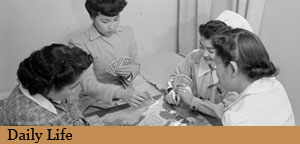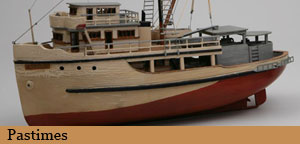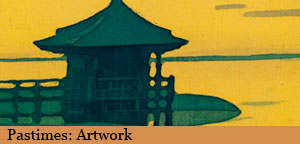- Haruko Niwa, Manzanar internee
In 1942 the U.S. Army leased 6,200 acres at Manzanar from the city of Los Angeles to build and operate a War Relocation Center for Japanese Americans. In addition to being remote, Manzanar’s isolation, water resources and agricultural history made it suitable for such a purpose. About two-thirds of all Japanese Americans confined at Manzanar were American citizens by birth. The remainder was resident aliens, many of whom had lived in the United States for decades, but who, by law, were denied U.S. citizenship.
The 500-acre housing section was surrounded by barbed wire and eight guard towers staffed by military police with searchlights and guns. By September 1942, more than 10,000 Japanese Americans were crowded into 504 barracks organized into 36 blocks. There was little or no privacy in the barracks or anywhere else in camp. The 200 to 300 people living in each block had separate men’s and women’s toilets and showers, a laundry room, and a mess hall. Up to eight individuals were housed in a 20-by-25-foot room, with four rooms to each barracks, furnished with an oil stove, a single hanging light bulb and cots.
Coming from Los Angeles and other communities in coastal California and Washington, Manzanar’s internees were unaccustomed to the harsh desert environment. Summer temperatures soared as high as 110°. In winter temperatures frequently plunged below freezing. Throughout the year strong winds swept the valley often blanketing the camp with dust and sand.
 |
Ansel Adams |
 |
Clem Albers | |
 |
Dorothea Lange |  |
Francis Stewart | |






